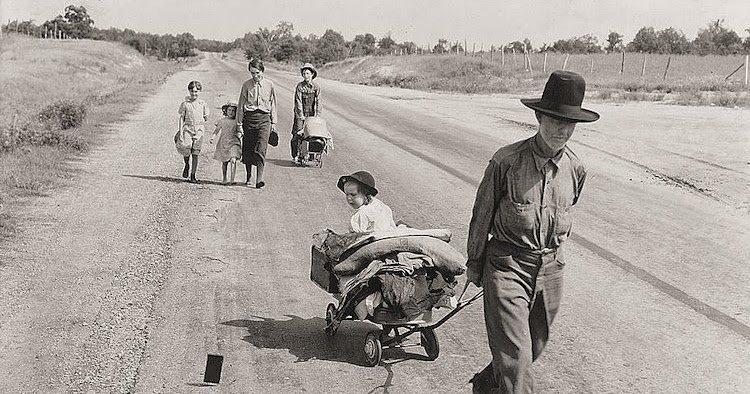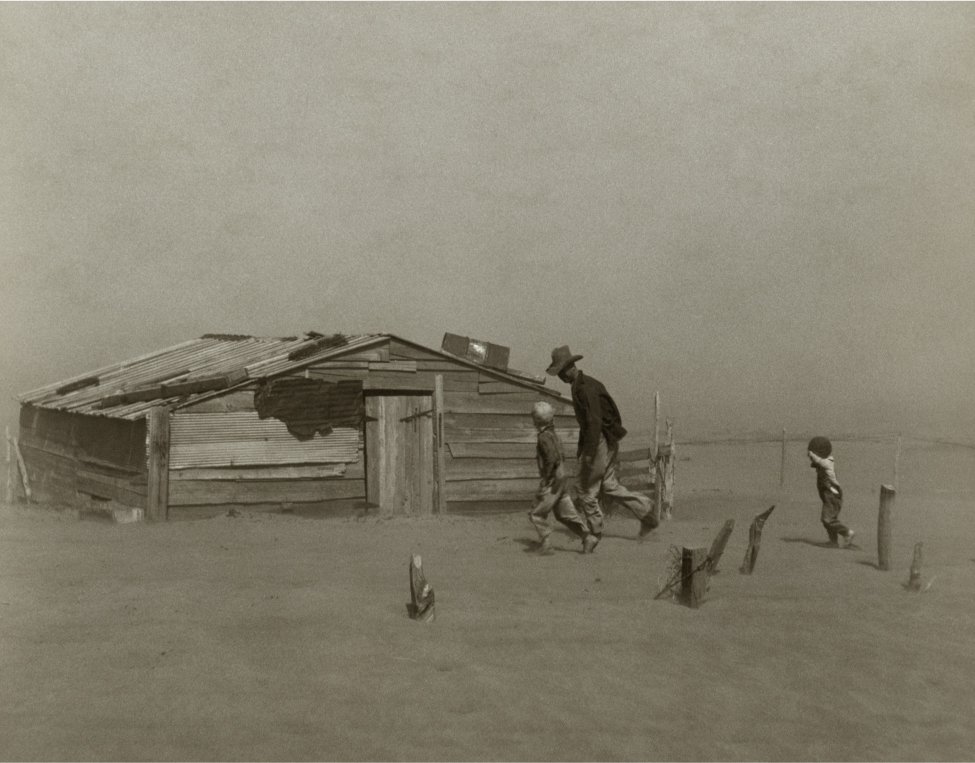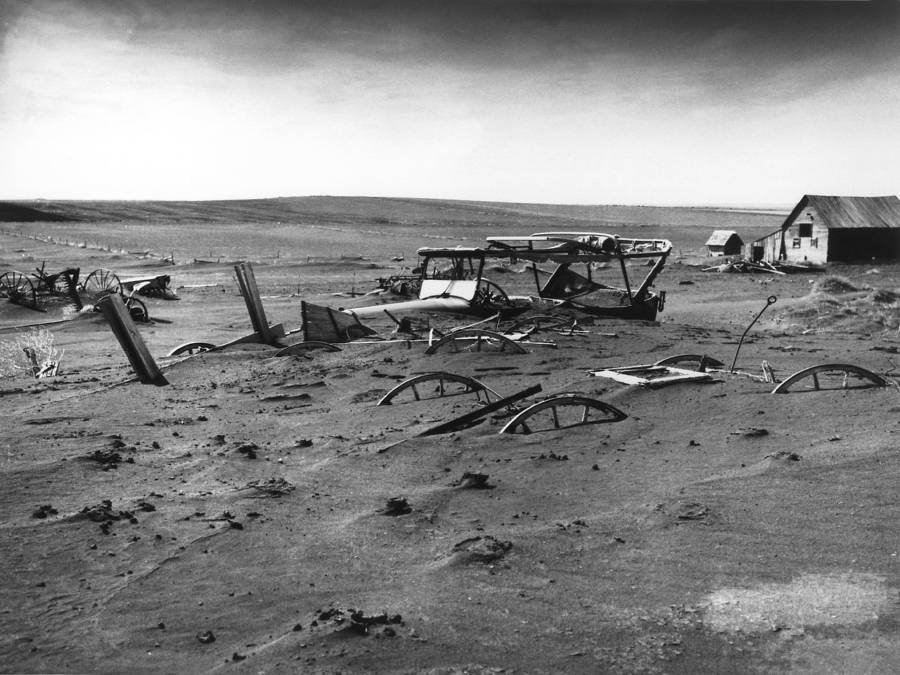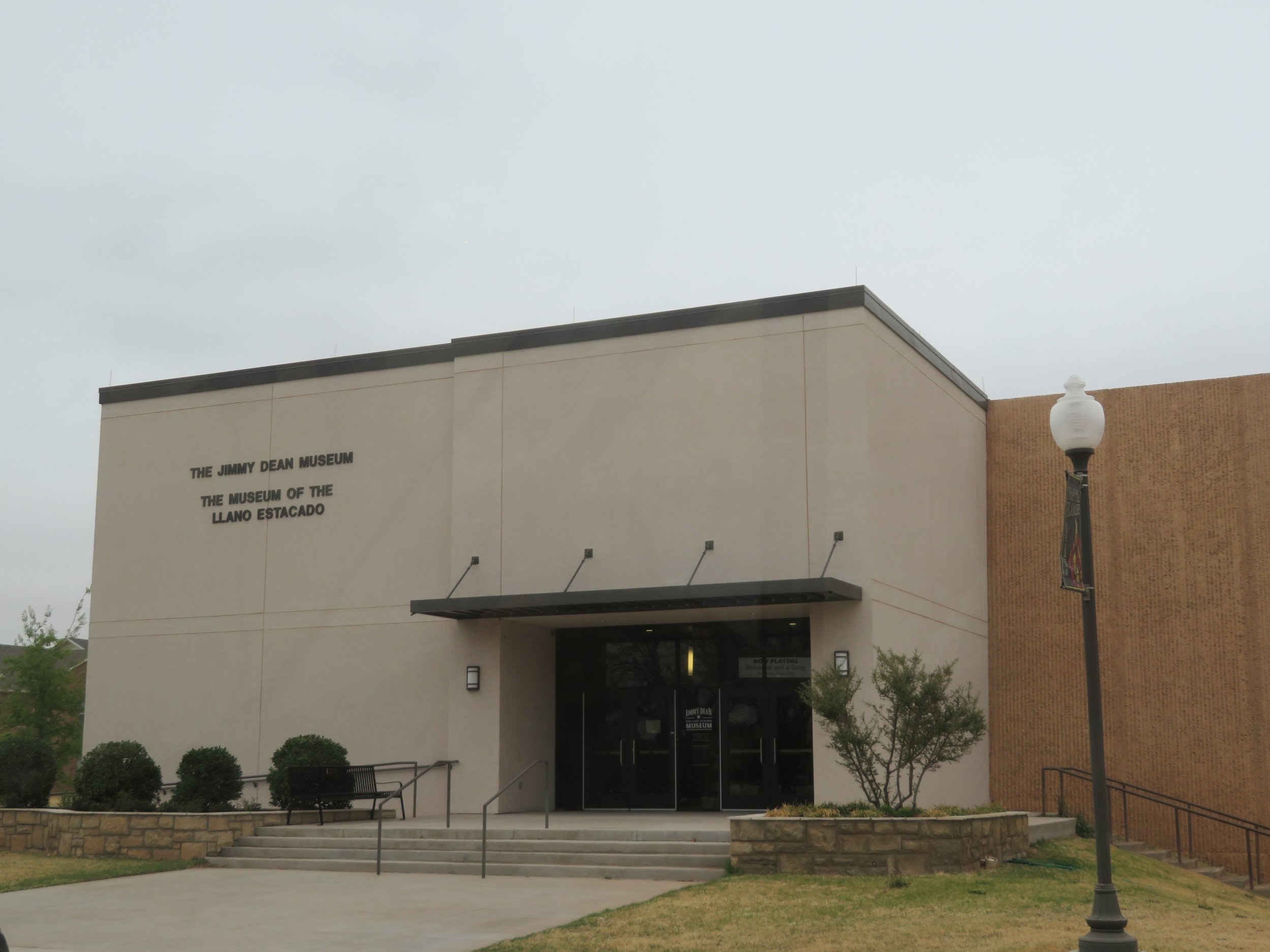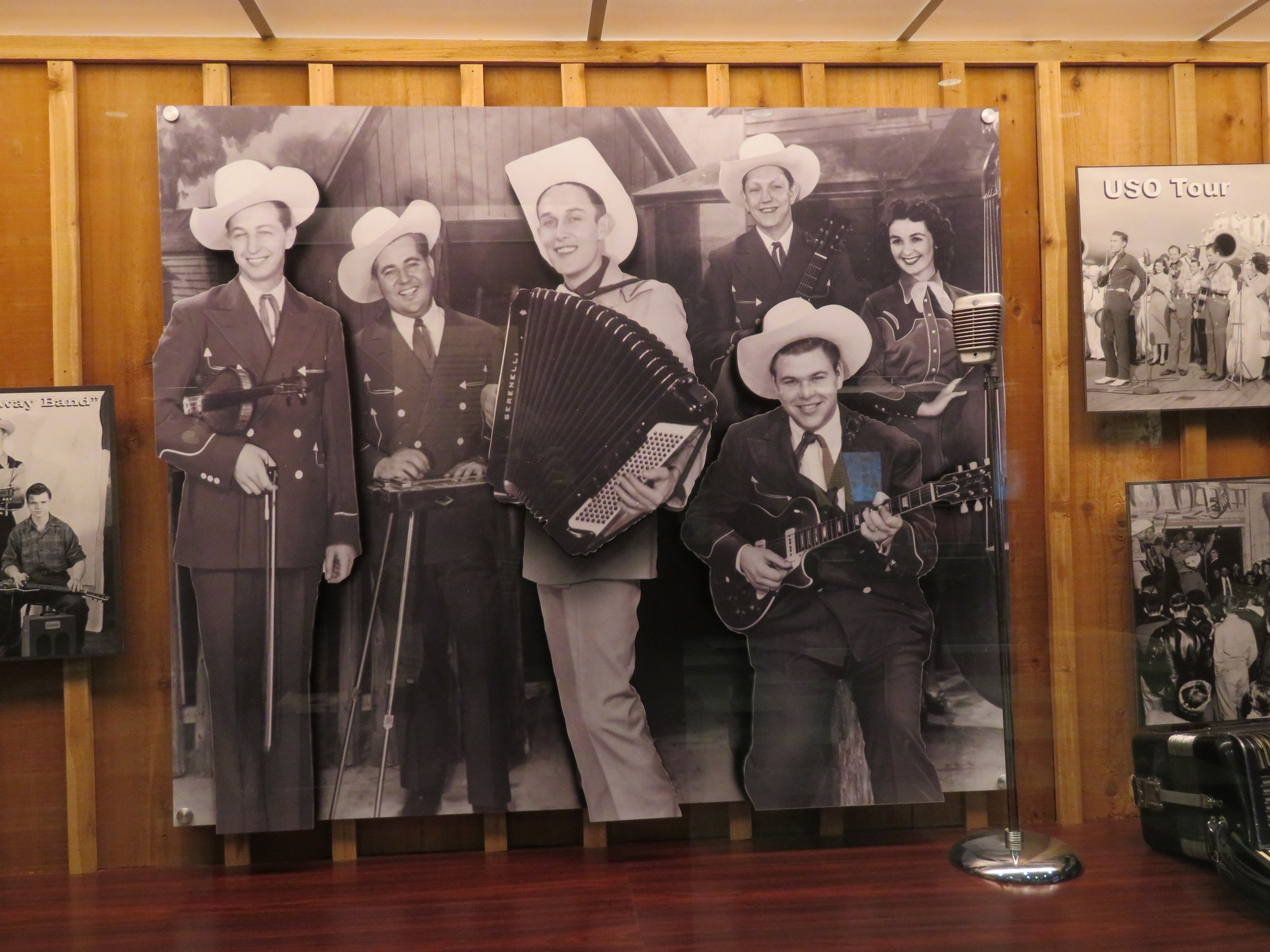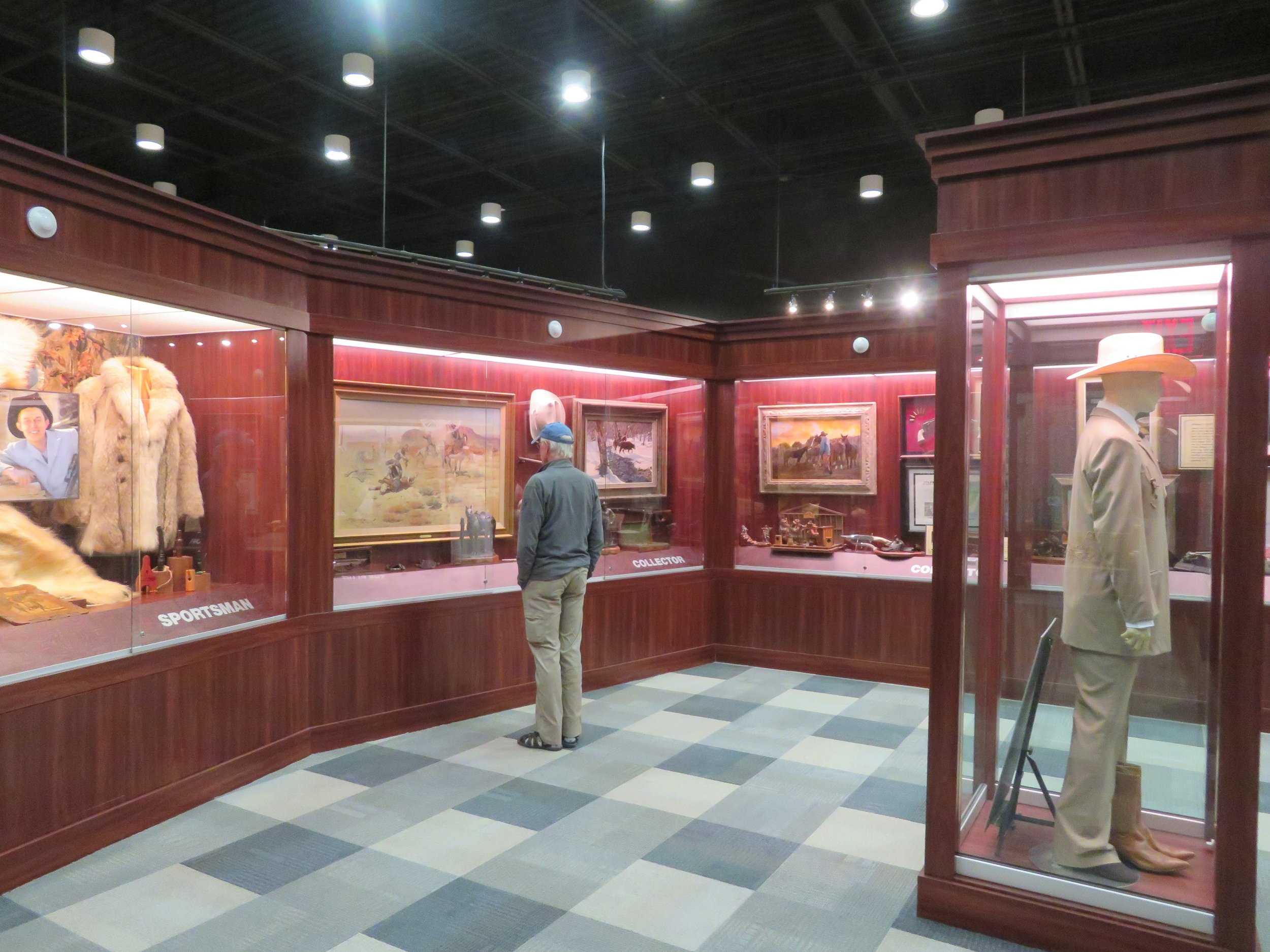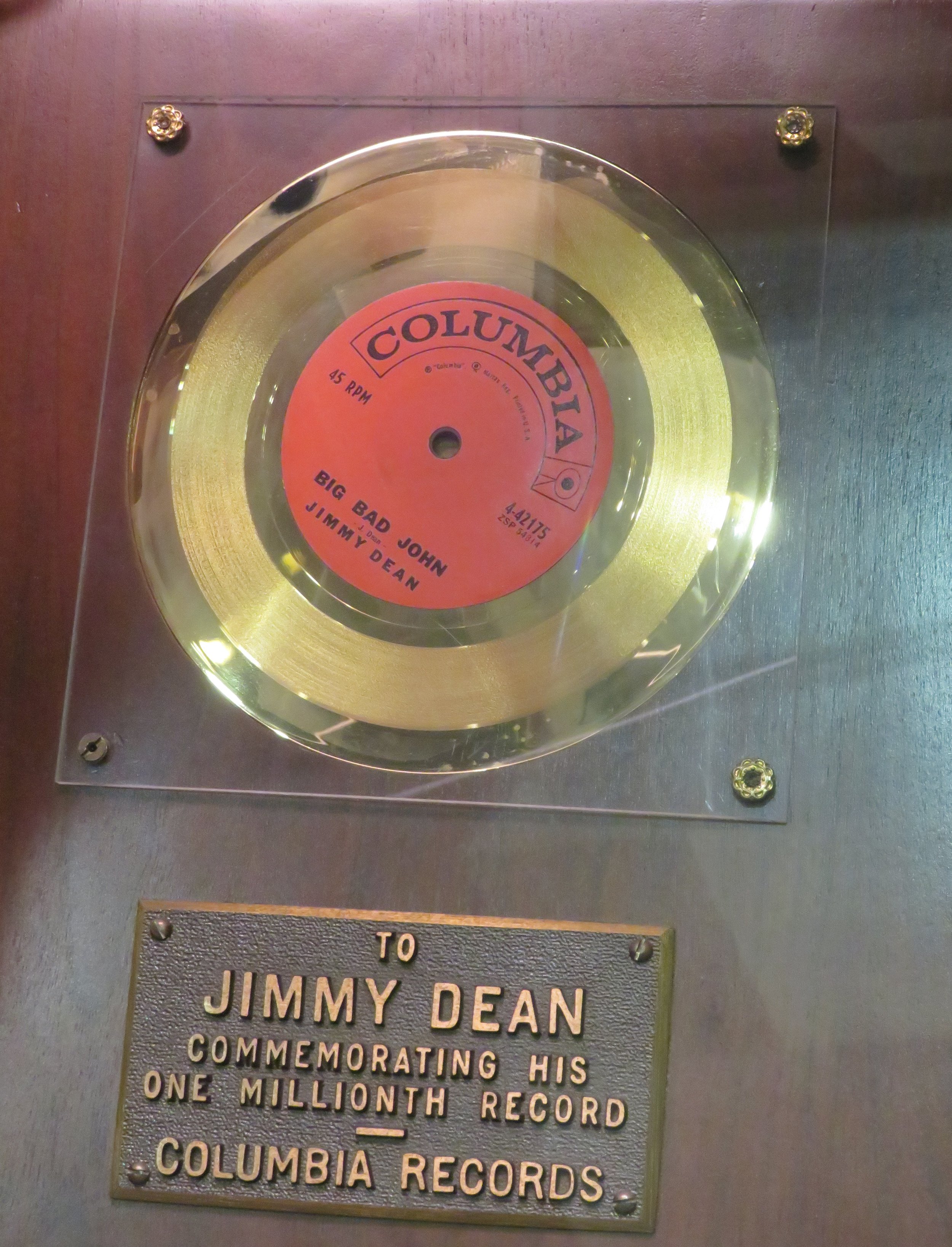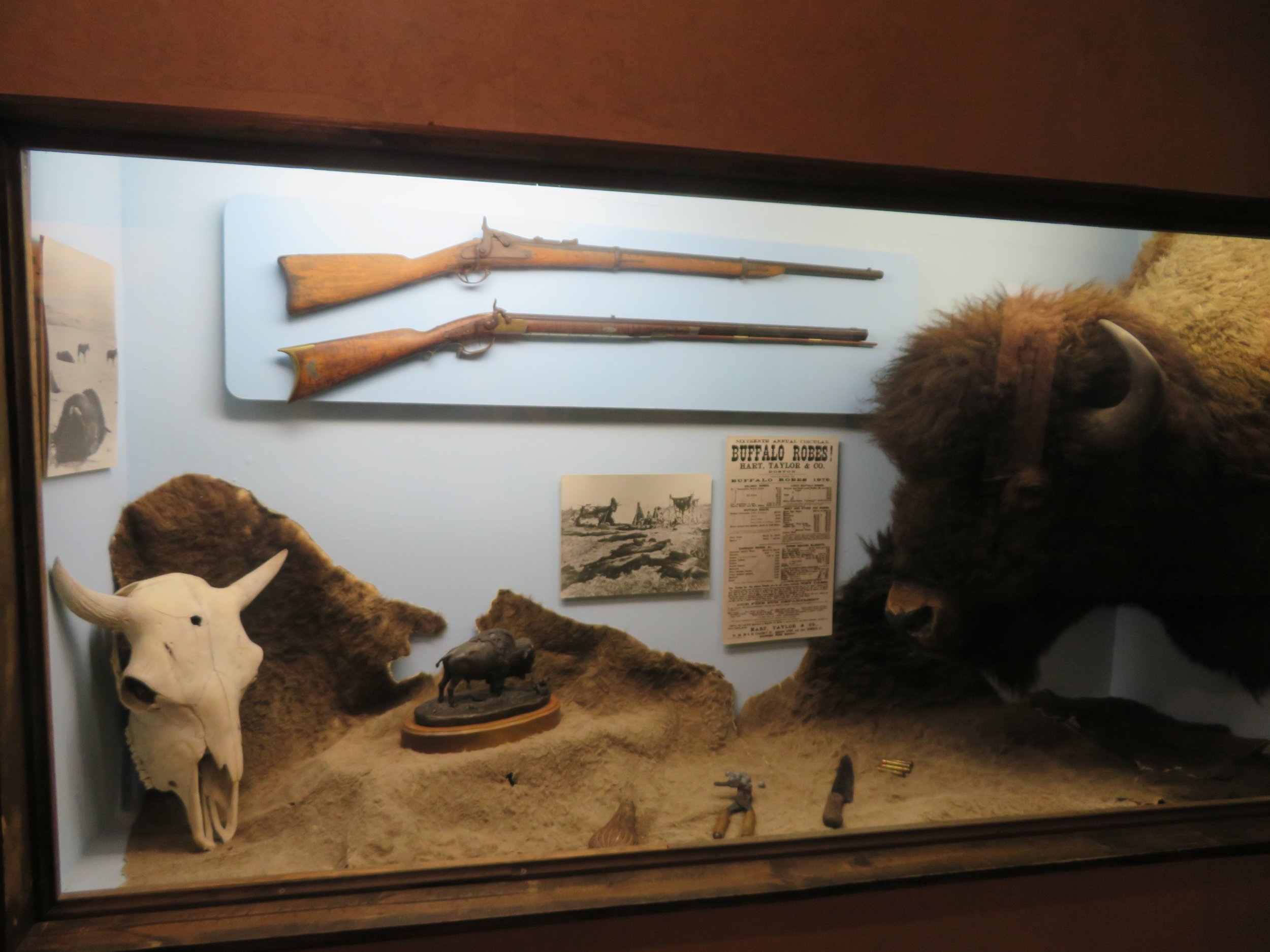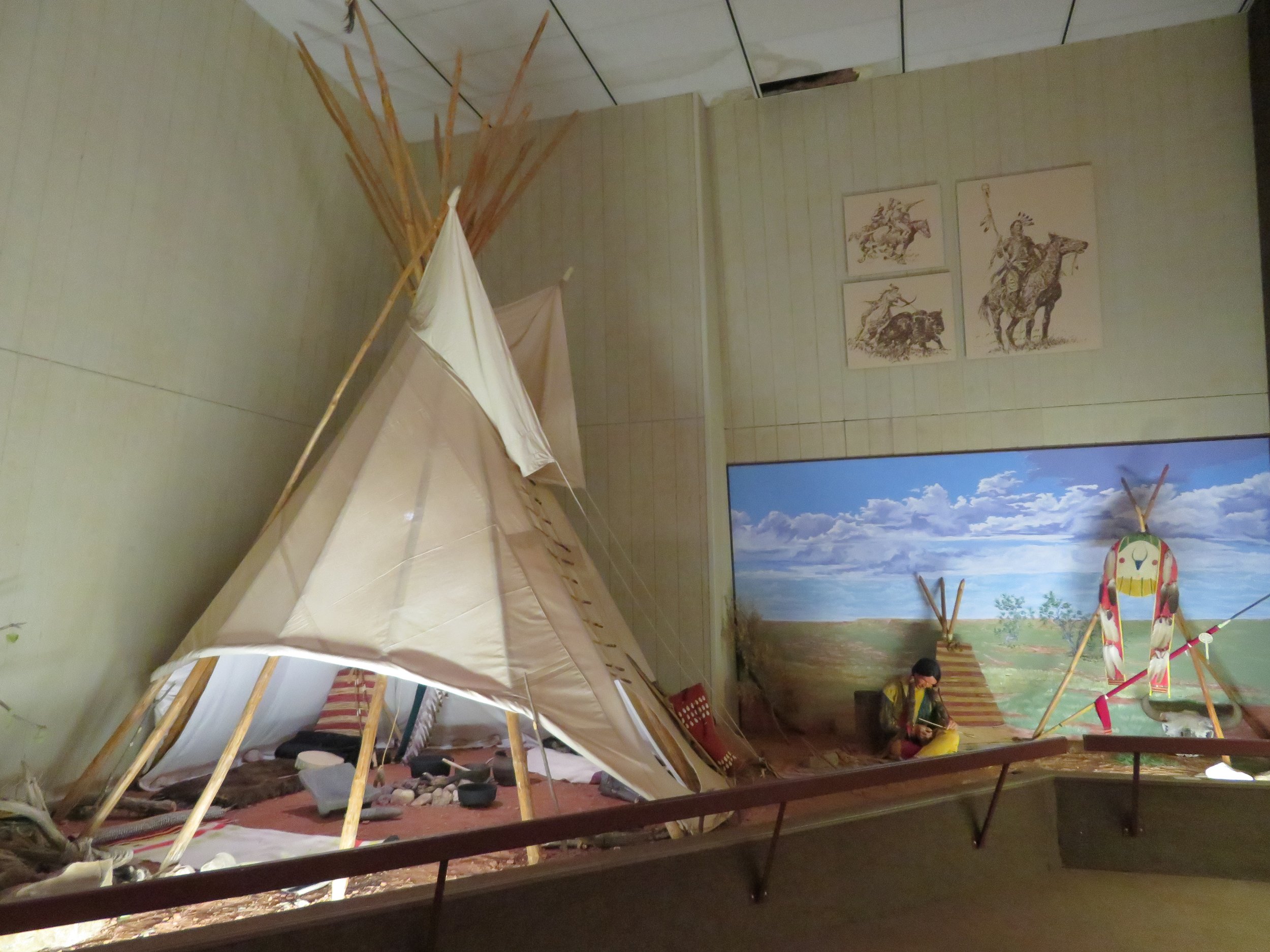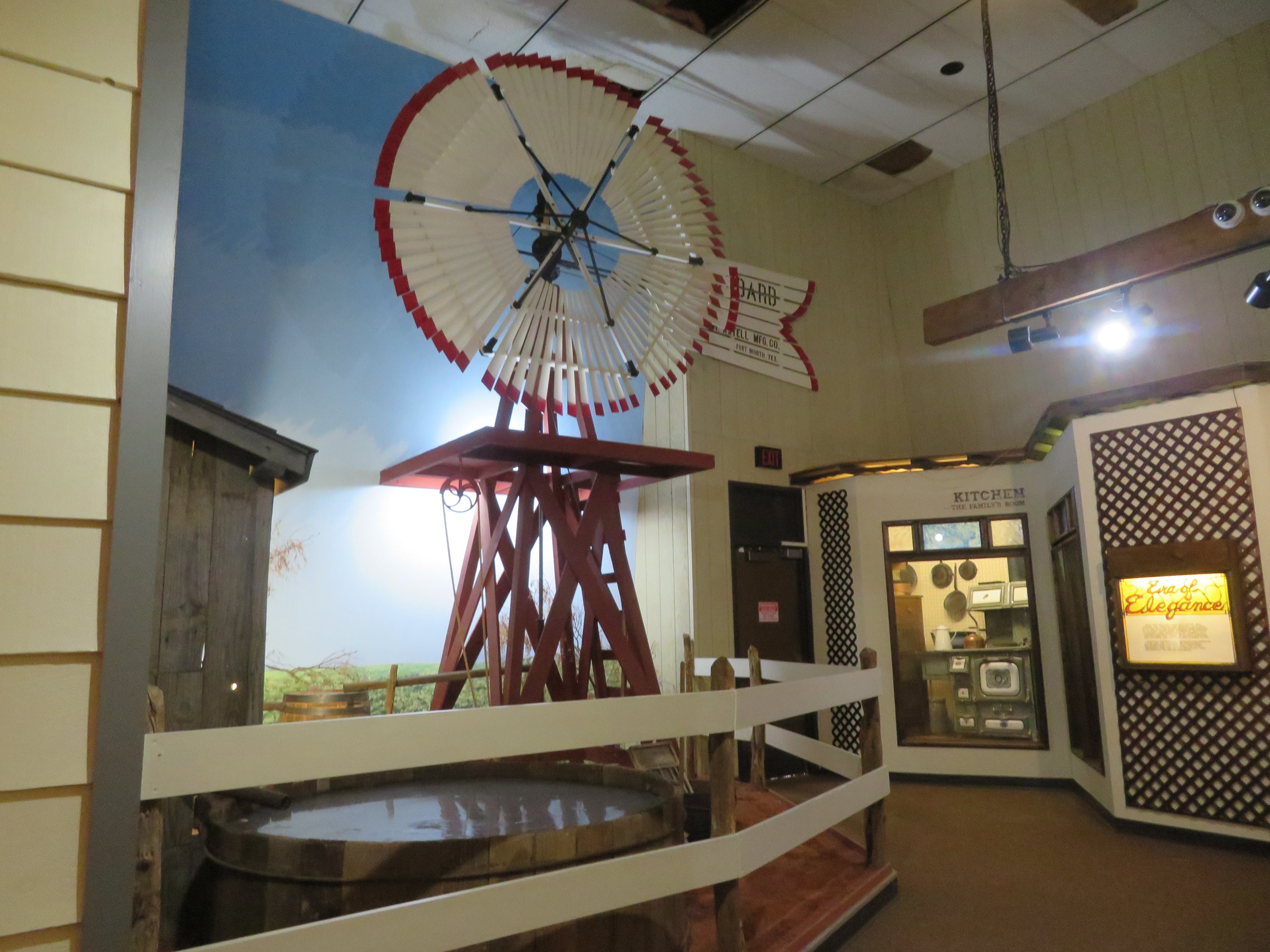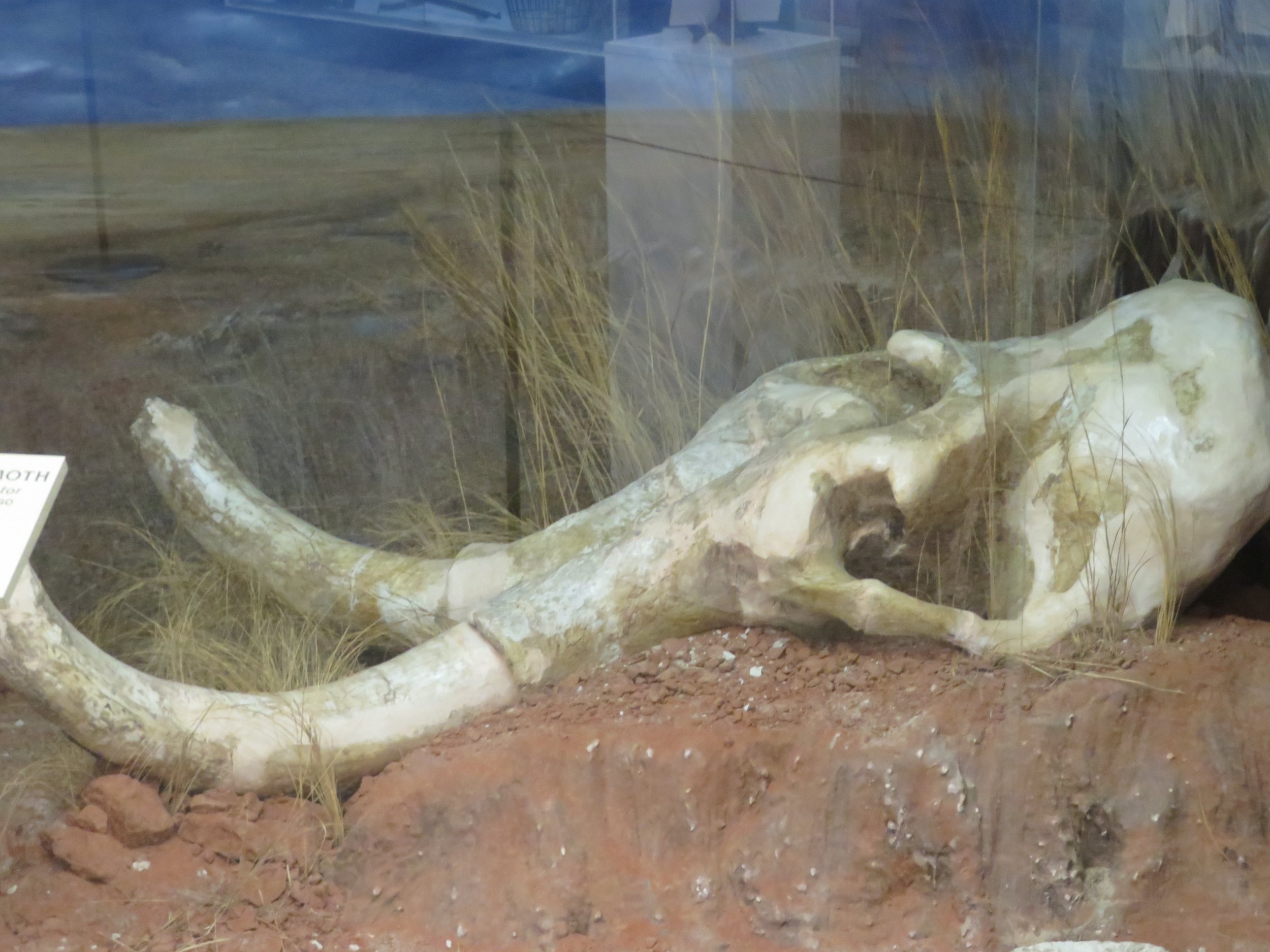Dust Bowl, A Sausage Mogul and Buddy Holly
/The Devil’s Rope Museum was more than we expected. David will fill you in on this unusual museum and its collection in his next blog, so I won’t steal his thunder. The museum, however, also paid homage to those folks who had lived through the Dust Bowl years. The “Dust Bowl [is the name] for both the drought period in the Great Plains that lasted from 1930 to 1936 and the [affected area] … that extended over southeastern Colorado, southwestern Kansas, the panhandles of Texas and Oklahoma, and northeastern New Mexico.” McLean and nearby panhandle towns were all in the Dust Bowl area of Texas. We were familiar with the ‘Dust Bowl’ from our high school history. We’ve read Steinbeck’s The Grapes of Wrath, but never truly realized just how devastating this catastrophic period was for the folks in this area until we saw the photos at the Devil’s Rope Museum. It took gazing at black and white photo after photo to make it all hit home. Photos below by Dorothea Lange capture the hopelessness and emotion of those who endured these terrible times.
We drove on ranch roads and farm roads once again. It was cold and windy, the wind always on the nose, always fighting us it seemed. We drove through a myriad of little towns, past ranches, and more cotton fields.
Unharvested cotton bolls looked like patches of fluffy snow in the fields.
From the plains to wide-open brown spaces and rolling hills dappled with mesquite and juniper. Hawks and vultures soared overhead and rode the wind currents, eyeing the ground below for snack opportunities.
Rolling hills of the high plains
Abandoned houses and shacks, holes in their roofs, all boarded up and ramshackled, were common sights. We wondered what stories these houses could tell of their former inhabitants.
A roadside sign advertised a cowboy church and another shouted “REPENT… tent revival tonight”.
We spent the night in the city of Plainview, Texas, the birthplace of Jimmy Dean, where we noted signs for the nearby Jimmy Dean Museum. I was never a particularly big fan of Jimmy, but my Mom was, appreciating his brand of country charm and wit and, of course, his singing. The description of the museum touted ‘Jimmy Dean – Singer, Entertainer, Sausage Mogul’. How could we resist a visit?
We had to make a free admission reservation to visit the museum which I dutifully did. When we arrived, we were the only visitors, were graciously welcomed, and invited to watch a video. We reluctantly agreed, but I’m glad we did. It was unexpectedly entertaining and well done with selected photos, clips from his shows, and a few of his offbeat sausage ads which were decidedly humorous. We were chuckling in spite of ourselves. The museum was well-lit and the memorabilia and photos tastefully exhibited. Multi-media kiosks throughout the venue offered clips of his TV show, interviews, amusing sausage ads, and down-home pearls of wisdom. It was a pretty impressive place.
The building is shared with The Llano Estacado Museum (High Plains), a regional museum focused on the “history and pre-history of the Southern High Plains, one of the continent’s largest geographic mesas.”. From a giant mammoth skull to Native American artifacts, to the settlement of the area by ranchers and the railroads, the museum provided an excellent overview of the area. There were even exhibits dedicated to the Victorian era with replica rooms exhibiting furniture styles, clothing, and memorabilia from the period. Once again, pretty impressive.
The museum building is on the campus of Wayland Baptist University which I wouldn’t usually mention except that Wayland seems to have a particularly honorable and remarkable history. According to Wikipedia, “The school is the oldest institution of higher education in continuous existence on the High Plains of Texas. When a run on the banks during the Great Depression threatened to close the school, the administration and faculty agreed to forgo pay to continue the task of educating students.” “In 1951, a black teacher, Mrs. Annie Taylor of Floydada, TX, approached the college asking if she could fulfill continuing education requirements at the college. James W. "Bill" Marshall, the school's sixth president, led the college to take the historic step to admit black students to the college, making Wayland the first four-year liberal arts college in the former Confederate states to integrate voluntarily… three years before the Supreme Court's decision to ban school segregation.” I found this worth mentioning and sharing. Way to go, Wayland Baptist U!
Then we were off to Lubbock, the hometown of Charles Hardin Holley, aka Buddy Holly. I was singing ‘That’ll Be the Day’ and every once in a while, David would join in. Yes, he sings occasionally. There were lots of places to visit in Lubbock, but we headed first to Buddy Holly’s grave at Lubbock Cemetery. We remembered visiting a cornfield near Clear Lake, Iowa a few years ago, the site of the plane crash in which Holly, Richie Vallens, the Big Bopper, and their pilot were all killed. Now, we visited his very understated, simple gravesite and sang ‘The Day the Music Died’. A little trivia… Buddy’s last name was originally spelled Holley with an ‘e’, but because of an error in a contract he was asked to sign listing him as Buddy Holly, he continued to use the new spelling as his professional name.
There were lots more Holly memorabilia throughout town. Across from the Buddy Holly Center, on the west side of Crickets Ave, is Buddy and Maria Elena Holly Plaza. A statue of Buddy is surrounded by the West Texas Wall of Fame paying homage to entertainers from West Texas including Dan Blocker, Waylon Jennings, Mac Davis, the Gatlin Brothers, Jimmy Dean, Roy Orbison, and Tanya Tucker among others.
Singer/songwriter Mac Davis (Baby Don’t Get Hooked on Me) is also a Lubbock native and is buried in the same cemetery.
The best museum of all in Lubbock was, however, the American Windmill Museum. Talk about odd collections… this one rates right up there with unusual, but fascinating things that folks collect. We’re ‘museum-ed’ out for today, but join us next time for a look at American windmills. They’ll blow you away!


